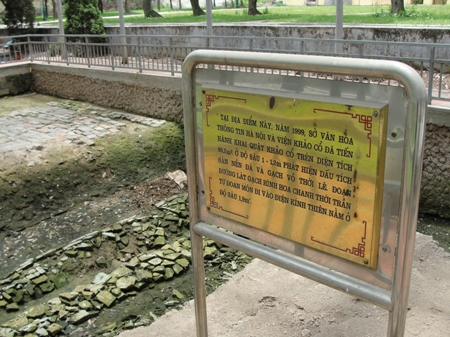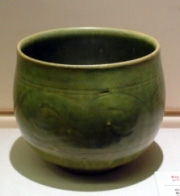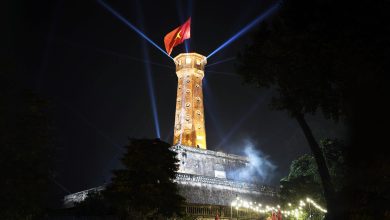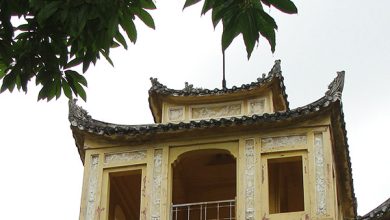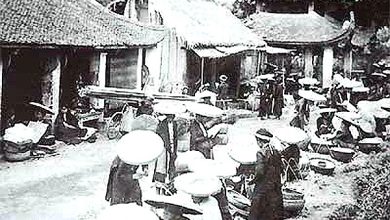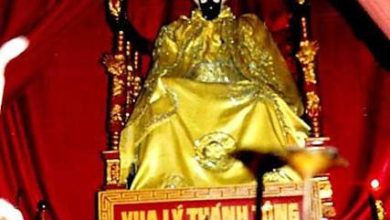Enamelled roads in the Imperial Citadel
Previously, historians have argued about the location of the Imperial Citadel. Some said that the Imperial Citadel of Thang Long was located in the west of Hanoi ancient citadel under Nguyen Dynasty. Others said that the Thang Long Imperial Citadel was at Hanoi ancient citadel under Nguyen Dynasty. The debate became heated because that no party could convince the other and each party had their own reasons. Not until roads paved with “lemon flower” bricks was found right at the main axis of Doan Mon, did the debate end. Scientists have agreed that Thang Long Imperial Citadel was located right at the Hanoi Ancient City under Nguyen Dynasty.
Roads paved with lemon flower bricks
According to old documents, roads paved with lemon flower bricks was built under Tran Dynasty. That was the path from Doan Mon Gate to Thien An Palace, located on north-south “deity axis”. As the main road running through the main gate of the Imperial Citadel, roads paved with lemon flower bricks was very sophisticated and highly aesthetic. The road-bed was firmly paved with slab bricks; the two sides were tiled in form of lemon flowers. Looking from a distance or from Doan Mon Gate, roads paved with lemon flower bricks outlined a straight line to Thien An Palace. From the remnants of this road, it can be imagined that the road paved with lemon flower bricks was as beautiful as a fussy stone-paved carpet to lift the king heel.
The road-bed was about 1.3 m wide, paved with 36x19x6cm bricks. These bricks were well arranged, forming the flat and smooth surface. Both sides of the road were two beautiful rows of bricks tiled in lemon flower form. Each lemon flower cell was a square with sides of four bricks of 36x36x6.5cm placed upright; in the centre, there were two diagonals like a lemon flower. The space was covered with thin pieces of tiles forming highly artistic cells.
Of the bricks used to build the road paved with lemon flower bricks under Tran Dynasty, there were bricks under Ly dynasty.
The road base was firmly reinforced with 12 layers of materials; the average thickness of each layer was 8cm. The materials reinforcing road base included mixed bricks, gravel, clay, scrap pieces of pottery, porcelain, etc. With a solid foundation reinforced to nearly a meter, the road paved with lemon flower bricks was extremely durable; it was able to withstand large forces without subsidence or collapse.
On the road paved with lemon flower bricks, archaeologists have found the cultural layer under Le Dynasty i.e. the courtyard tiled with wooden-hammer bricks the contour of which fit Doan Mon Gate. This shows that Doan Mon existing today dates back from Le Dynasty. In other words, Le Dynasty built the Royal Citadel on the “deity axis” running through the main entrance to the south.
The road paved with lemon flower bricks is the most convincing evidence, confirming that Hanoi ancient citadel today is the centre of Thang Long Imperial Citadel under Tran Dynasty. According to historical documents, Tran Dynasty received the Palaces from Ly Dynasty in a peaceful and smooth transfer. Le Dynasty also received Thang Long Imperial Citadel from Tran Dynasty without geographical movement. Thus, from Early Ly, Ly, Tran, Le Dynasties to Nguyen Dynasty later, the main area of Thang Long Imperial Citadel was not moved. This is an important base so that we can carry out the reconstruction of the ancient imperial architectural structures, contributing to the preservation of national architectural culture beauty, while providing the opportunity to develop stronger tourism for the Capital in the future.

